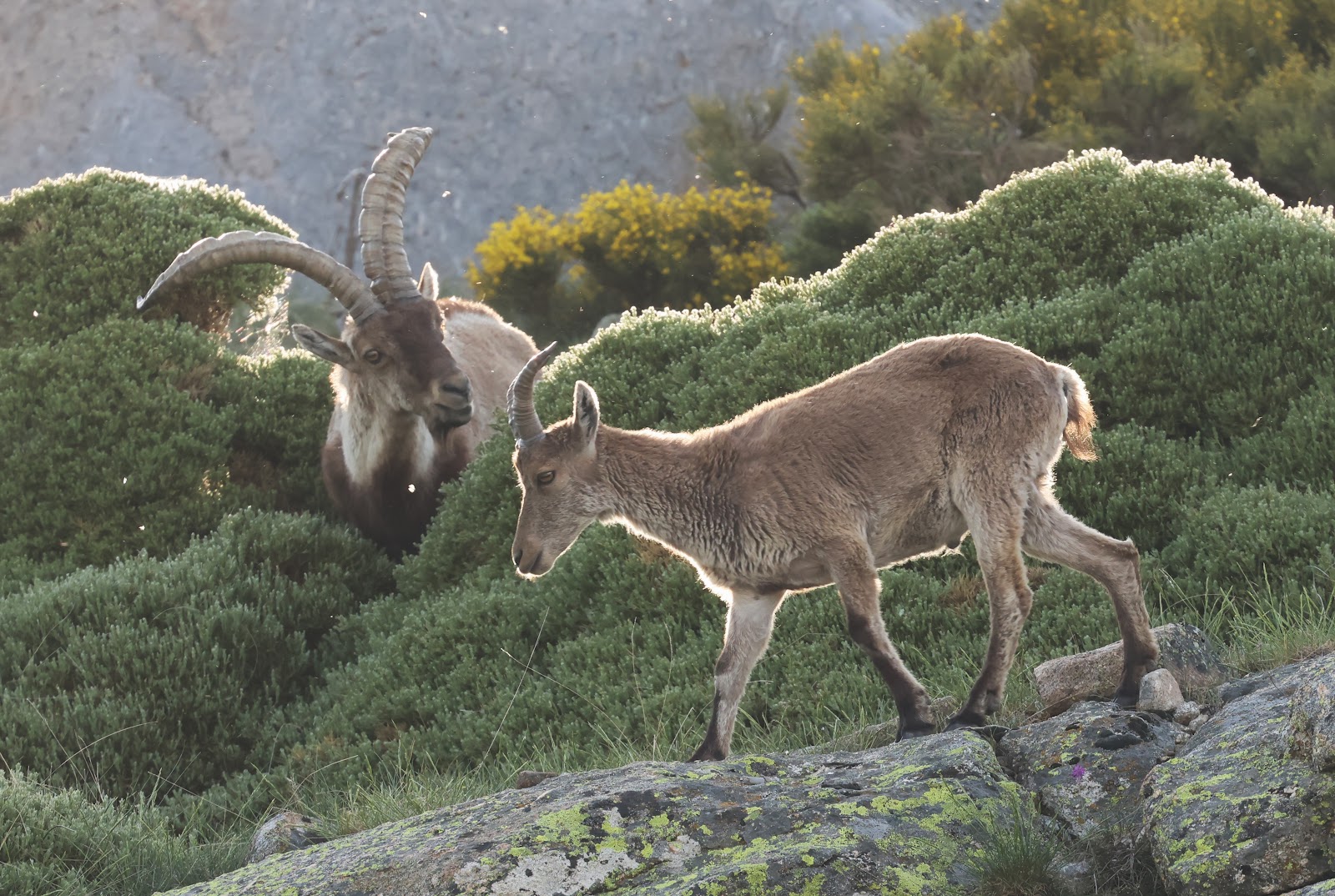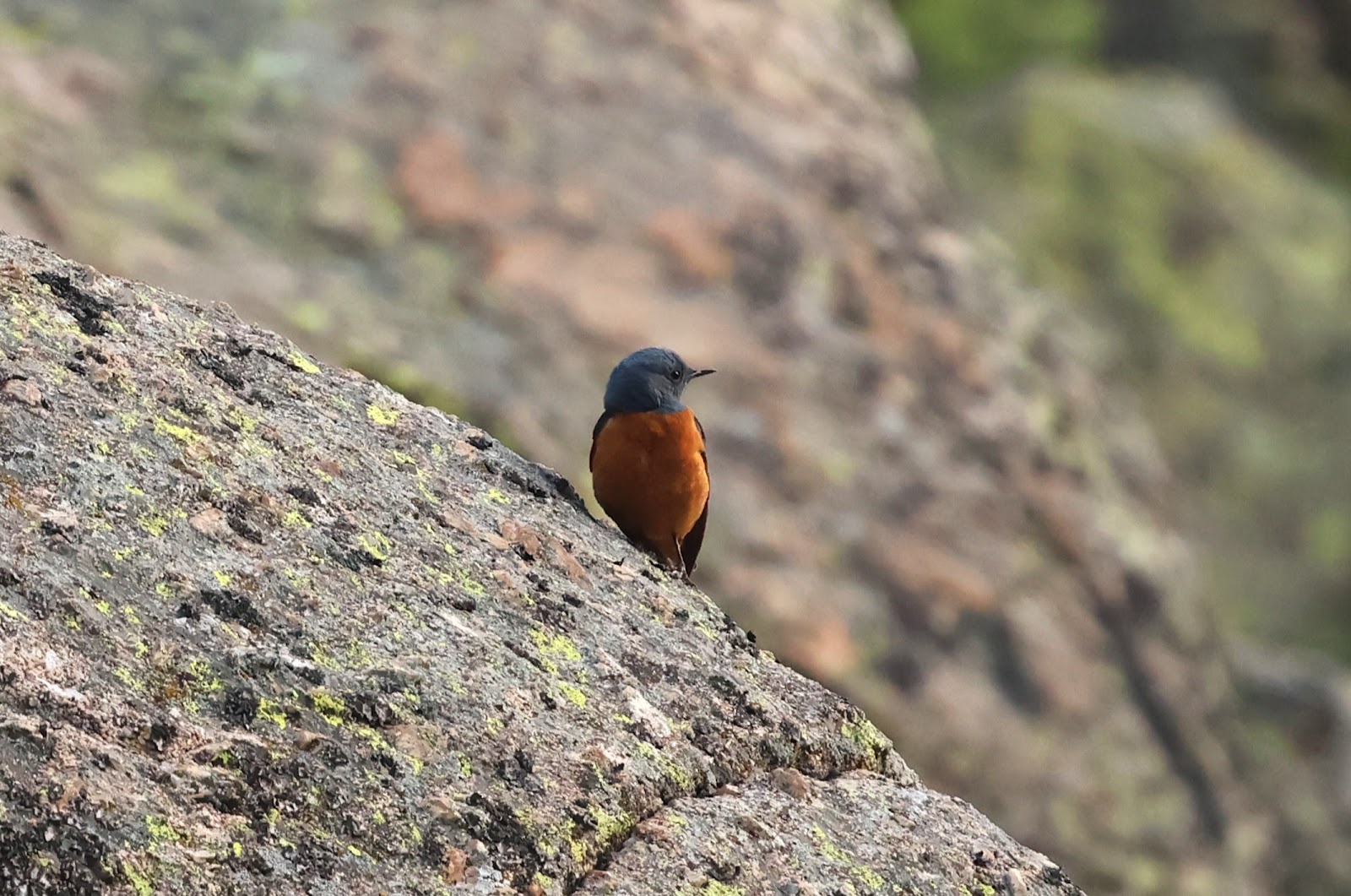We had been keeping our schedule flexible by booking hotels as we needed them. This was to enable us to determine the next birding area based on what we had already seen. Given our success at Arrocampo, there was no longer a strong case to visit another wetland. Since Paul needed (Rufous-tailed) Rock Thrush, we decided to finish off the trip in the Sierra de Gredos. An added bonus was that Spanish Ibex was easy to see there.

After booking and checking into the swanky and surprisingly low cost Parador de Gredos hotel, we headed up to the Plataforma de Gredos. On the way up we made a couple of stops for lower elevation species, seeing Woodchat Shrike and Western Bonelli’s Warbler.


Since I had seen Ortolan Buntings on the lower edge of the subalpine heath in the Sierra de Bejar, I assumed (wrongly as it transpired) that this species would only be lower down here. At a stop to look for Dipper by a bridge, we heard an Ortolan singing up the slope. Coincidentally, there was a British bird photographer parked there as well and I used some playback to bring the bird in for great photos. Although, the other brit had failed to see any Rock Thrushes in a long walk to the Mirador, I was surprised to hear he had had really good looks at Alpine Accentors. This was a species I was unaware occurred on our potential itinerary. Although it was not a really high priority, since I had seen several really well in Germany a few years previously, we decided to give the bird a shot the next morning.

We spend last couple of hours of daylight hiking up into valley above the Plataforma. Paul did see a Bluethroat briefly and there were plenty of Northern Wheatears, Skylarks and Black Redstarts. Back in the car park, we found Yellow and Gray Wagtails. Some scanning of the rock ramparts that lined the valley eventually turned up a potential Rock Thrush, which we were able to confirm in the scope. We hoped to get better looks the next day.
Arriving the next morning at dawn, we were immediately successful in getting much better looks at the Rock Thrush. A male Blue Rock Thrush showed up as well. At that point, we walked as fast as possible to the nearest point that had more extensive snowfields in the hope of seeing a Alpine Accentor. Although we got up to some larger snow patches, we didn’t have time to completely clear the highest patches of low heath, which meant we were still in the domain of the Dunnock when it was time to turn back. Returning back down through more subalpine heath and rocks, we found several Ortolans, occurring high up here, and a couple more Rock Thrushes and an obliging pair of Rock Buntings.
At that point, it was time for us to finalize our packing, finally putting away hiking boots, scopes, tripods and monopods. We drove the two and half hours to a service station near the airport to fill up and returned the car. We could both reflect on a pretty good trip. Paul had seen all his possible life birds on the itinerary, except for Dupont’s Lark, as well as catching up on dozens of species he had not seen for decades. Out of over 90 target species for me, there were only three I had not seen – and one of those, Eurasian Eagle Owl, I had seen within the last decade. I had had good to excellent views of all the other birds and would no longer need to dig up so many memories from the distant past when reflecting on the birds of my home continent.


Comments
Post a Comment